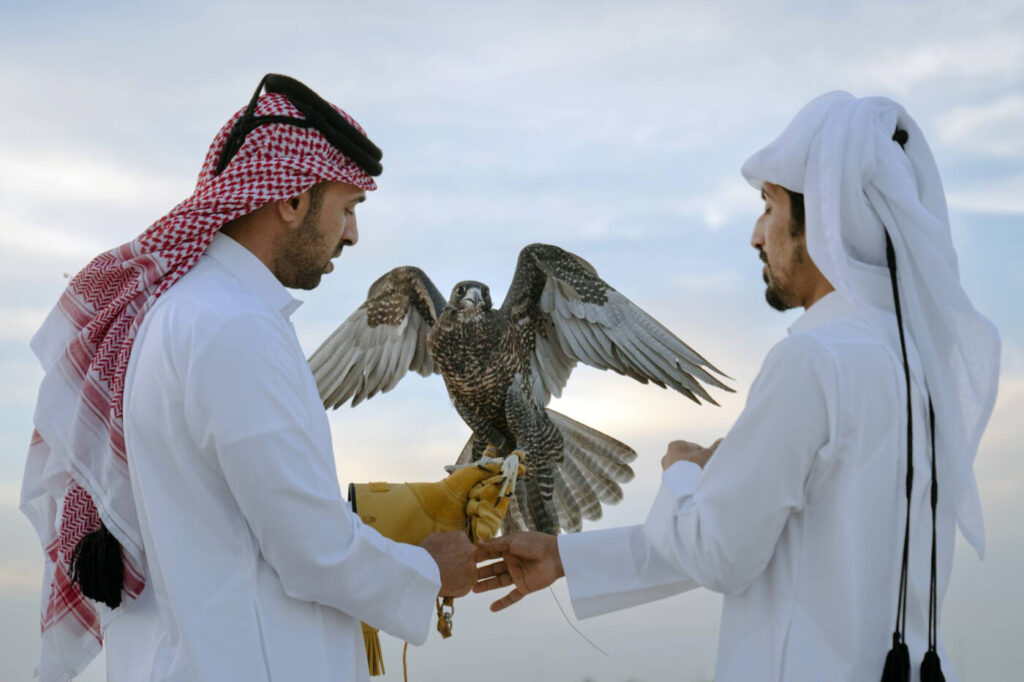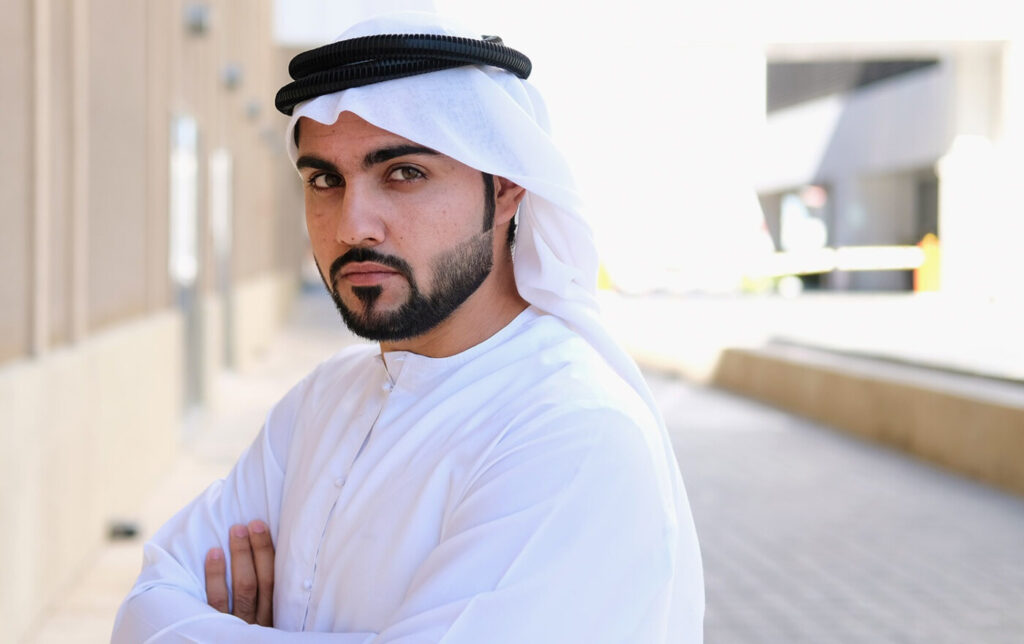
All native residents of the United Arab Emirates approach their choice of clothing very modestly. The fact is that, first of all, this is connected with the Muslim faith, as well as with long-standing traditions. Absolutely every visiting tourist and immigrant must respect the culture of the UAE. Otherwise, you will face problems with the police. In this article, we will talk about the traditional clothing of the UAE residents.
All tourists, as well as local residents, should behave modestly and not wear too provocative outfits. You should especially dress modestly if you travel to the emirate of Sharjah. When visiting this emirate, avoid wearing clothing with revealing necklines, short skirts, or shorts.
READ: A Brief History of Dubai: Geographical Features

This robe in the United Arab Emirates is called dishdasha, sometimes this clothing is called gandura. The dishdasha is typically white, but can also be blue, black, or brown in winter or rural areas.
The modern dishdasha is equipped with a collar and pockets. In addition, if you look closely, you can see that city residents have a tie called tarbusha, it can be of very different shapes.
In addition, men can be seen wearing a white headscarf called gutra. In winter, the scarf can be thicker, for example, made of wool with various beautiful patterns. In addition to the scarf, on the man’s head, you can see an igal – this is a kind of rope with which, according to legend, a Bedouin tied his camel at night and kept it on his head during the day. Indigenous male Arabs wear two hanging cords, in addition to the scarf and igal, for decorative purposes.
Interesting fact! It is known that in ancient times the Arabs used the end of the gutra to cover the lower part of the face, mouth, and nose during their wanderings in the desert.
If, while walking along the streets of the United Arab Emirates, you meet a person dressed in more national clothes, for example, a didshada, but without a collar and pockets, as well as a different color and a wider one, this means that you have met an Omani on your way.
It’s easy to identify an Omani and a Dubai resident by their headwear. Omanis typically wear turbans while Dubai residents wear scarves. In turn, the turban on the head of an Omani will look very intricately twisted and also have many patterns.
READ: UAE Citizenship: Opportunities to Obtain a New Passport for a Foreigner

Traditional clothing called abaya is black in color, sometimes it is decorated with special patterns that are made from gold threads. The abaya is a traditional garment worn by women in the UAE, both for festive occasions and in public settings. In addition, such an abaya on a woman shows her status in society. Additionally, for women living in Dubai or Abu Dhabi, the abaya is made from lightweight fabrics such as silk or satin.
Under the abaya, Arab women can wear absolutely any clothes they want. According to customs, a woman’s head is covered with a headscarf or scarf. A woman’s head outside the house is covered with a black scarf, and she hides her face under a veil. Thanks to this robe, a woman can see everything that is happening around her, but you will not be able to see her face. In addition, there is another version of the dress when only the lower part of the face is covered.
For example, older women in rural areas wear half masks called “byrga”, which covers most of the face. If on the street of the UAE, you meet an Arab woman with her head uncovered and wearing European clothes, this may mean that the girl arrived in the UAE from another country.
Women in some cultures apply makeup to all visible parts of their body, including using black kohl to make eyeliner and henna to create intricate patterns that can last for a month or even longer.
The patterns that Arab women make on open parts of the body are today exactly the same decoration as makeup for a European girl. With the help of these patterns, Arab women create their own mood. However, in ancient times, these patterns protected the skin of Arab women from the scorching sun. In addition, henna patterns are applied to the body on special occasions, for example, if relatives are having a wedding ceremony. Patterns can also be applied at the birth of a child.
Today, a very large number of tourists make similar patterns on their hands, since the art of applying henna designs has developed to such an extent that they can hardly be distinguished from a tattoo. Basically, tourists make these patterns as a souvenir and reminders of a wonderful trip to the UAE.